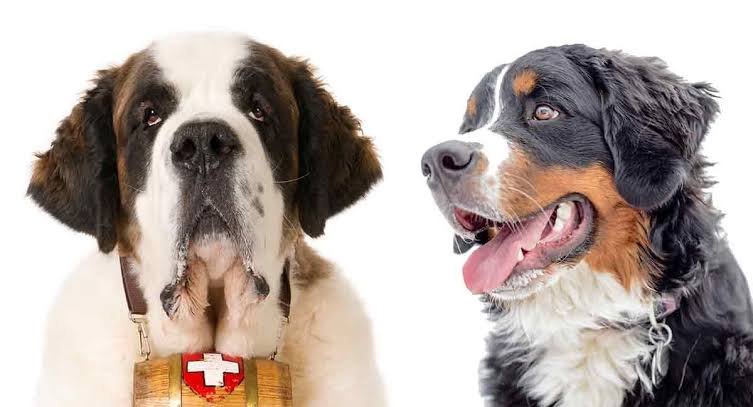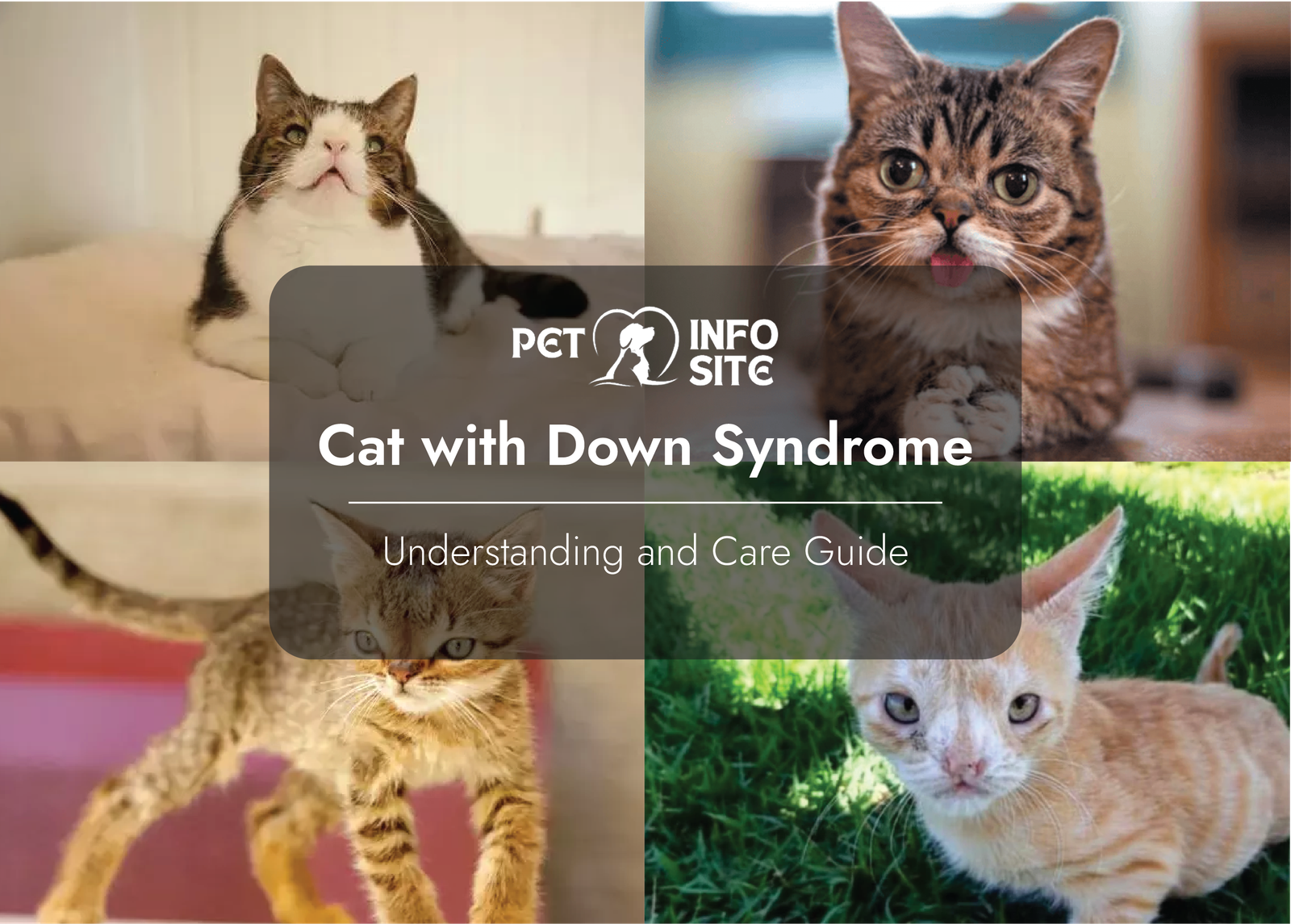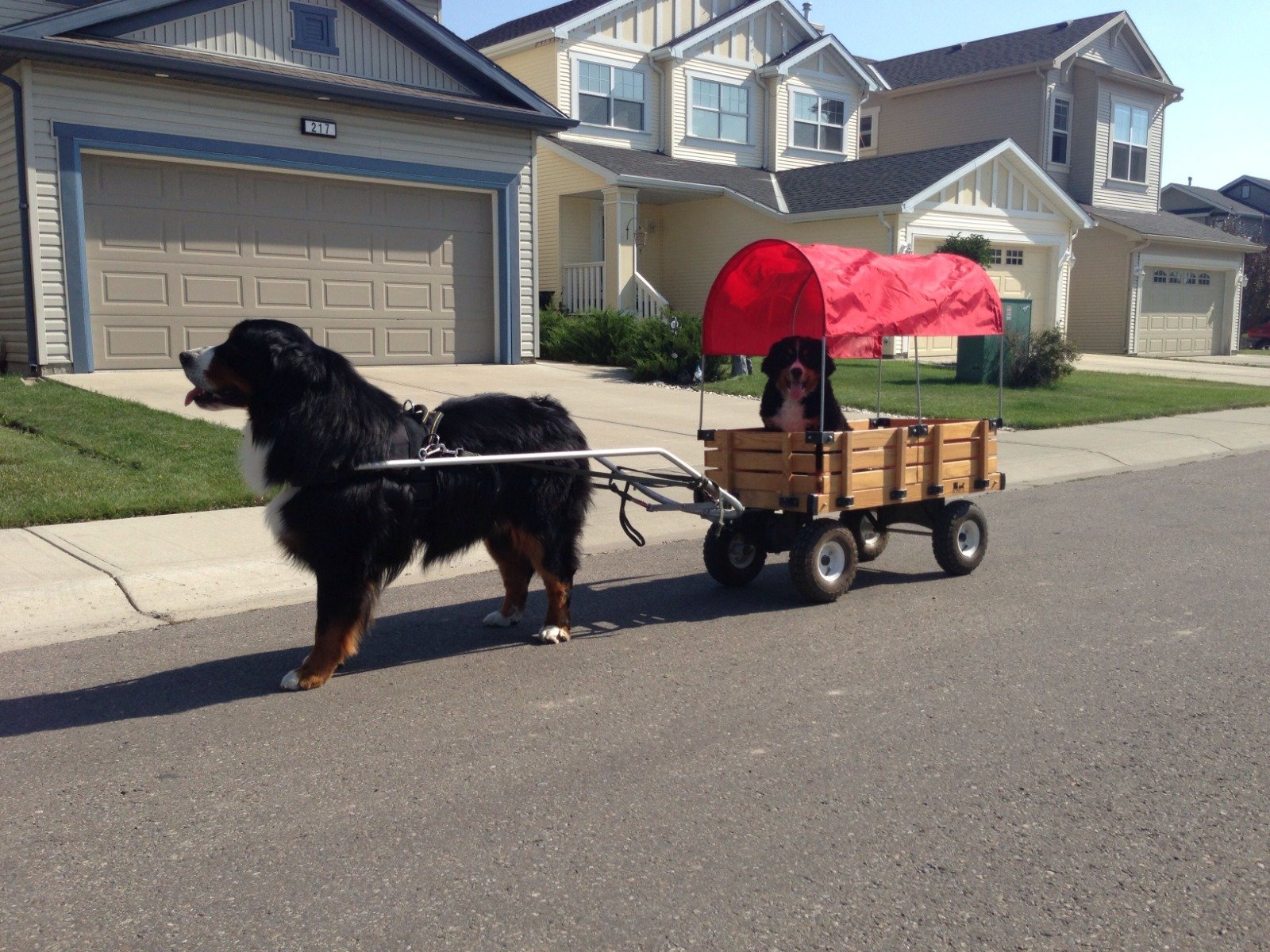A Comparative Guide to Examining Saint Bernards and Bernese Mountain Dogs
Some breeds are more famous than others in the wide world of canine friendship. Because of their strength, kind attitude, and steadfast devotion. Among these, Bernese Mountain Dog vs Saint Bernard draw attention. Due to their remarkable size as well. As the deep love, they provide to those who are lucky enough to live with them.
We are on a trip of discovery and exploring the amazing world of Saint Bernards. And Bernese Mountain Dog with the help of this detailed publication. These past and traditional breeds have won over dog lovers all around the world. With their unique personalities and outstanding qualities.
Come explore the variety of characteristics that characterize these magnificent breeds. From how they started to their current place as respected family pets and faithful friends. We’ll examine the similarities as well as the differences between both of these breeds. Through a view of comparison, showing what makes them unique. And highlighting the elements that contribute to their standing. As highly valued members of the dog community.
However, this guide extends beyond
breed rules and physical characteristics. We explore small variations in temperament, looking at the kind temperament. And loving characters that separate both Bernese Mountain Dogs and Saint Bernards. Some breeds perfectly capture the spirit of what. It means to be a man’s best friend, from their steadfast loyalty. To their natural capacity for comfort and company.
Overview of Breeds
The History and Characteristics of Saint Bernards
The interesting part of Saint Bernards dates back to the Saint Bernard Charity in Switzerland’s Western Alps. This charity was founded in the eleventh century by Bernard of Menthon to offer security. And support to those traveling dangerous mountain passes. Saint Bernard breed as we understand it today originated from the enormous. Powerful dogs that the hospice’s believers started. Raising to help with their rescue missions.
These gorgeous dogs became famous for their amazing abilities in identifying and rescuing lost people in the hard mountain environment. With their keen sense of smell and natural sense of direction. Saint Bernards would brave risky conditions. To find people who had been lost in the snow. Their muscular physique and heavy, waterproof clothing allowed them to endure the bitter cold and rough terrain of the highlands.
Saint Bernards provided crucial support as rescue dogs, but they served as guards and friends at the hospice. They are amiable and kind even though they are very large, which makes them very popular. With everyone they come into contact with. Saint Bernards make excellent family pets and aid dogs because of their warm, loving attitude. Which is shown in their beautiful dark eyes and characteristic “smile.”
Saint Bernards are powerful, graceful animals on the outside. Males usually weigh between 140 and 180 pounds (64 and 82 kg). And are 28 to 35 inches (71 to 89 cm) tall at the shoulder. Females are somewhat smaller but still rather large. Their thick, double-layered coats, act as protection from the cold and snow. Are usually white with red, hardwood, or brindle detects or patterns. Saint Bernards are noted for having a mild temperament given their height. And they are particularly tolerant and patient with children. It has made them known as the “soft giants.”
The History and Physical Characteristics of Bernese Mountain Dogs
Originating in the Swiss county of Bern, the Bernese Mountain Dog is also referred to. To the Berner Sennenhund plays a crucial part. In the everyday routines of farmers and dairymen. Bernese Mountain Dogs were prized for their flexibility and work values. Having been developed to survive hardships of tough conditions and severe weather.
The beautiful tricolor coat of these royal dogs. Which consists of a glossy black foundation with rich iron markings on the face, eyebrows, and chest. And legs, together with a white blaze on the back. And a white tail tip readily separates them. The color combination of Bernese Mountain Dogs makes them look royal and landing, drawing attention to themselves wherever they go.
Aside from their beautiful coat, Bernese Mountain Dogs have a strong, balanced body. Males average between 25 and 27.5 inches (64 and 70 cm) at the shoulder and 80 to 115 pounds (36 to 52 kg). While females are a little smaller. Their kind and loving nature is shown in their large heads, deep dark eyes, and soft expressions.
Because of their well-known levelheadedness, Bernese Mountain Dogs are excellent therapy dogs and family companions. They build strong, long-term connections with their human partners very loyal and dedicated to them. Bernese Mountain Dogs, despite their large height, are sensitive giants at heart. They are wonderfully patient and kind, especially with kids and other animals.
Temperature and Character

Saint Bernards: Kind, Huge Giants
Beyond being just big dogs, Saint Bernards are kind giants with hearts the size of their bodies. Despite their dangerous look due to their huge size, they are kind and calm. Saints have a peaceful, quiet manner that quickly makes others feel comfortable. Their compassion has no boundaries, and they are always ready to express love to everyone they come into contact with.
These kinds of giants are famous for their tolerance and patience, in particular with young ones. They naturally connect with children and regularly take the position of a caring and protective protector. Families with little children will find Saints to be ideal pets since. Despite their size, they are extremely kind and sensitive. When interacting with younger family members.
In addition to their loving nature, Saint Bernards are famous for their commitment and hard work to their families. They form strong bonds with their human lovers and would stop at nothing to ensure their happiness and safety. Saints are there for the ones they love no matter what whether it’s a warm hug or a calming presence during trying times.
Bernese Mountain Dogs: Faithful Friends with a Faithful Nature
The pleasant and outgoing nature of Bernese Mountain Dogs, sometimes to as Berners is well-seen. These magnificent pets easily win over family members and friends due to their inherent charm. Berners are laid-back dogs that are always delighted to meet new people and greet them with joyful tails.
The constant love of Bernese Mountain Dogs for their family is among their most charming traits. They develop close relationships with their human partners and are quite serious about their protective duty. Berners have a strong sense of duty and will go to any lengths to ensure the safety of those they care about, even if it means keeping watch at the door or being a calming presence in trying times.
Bernese Mountain Dogs are tolerant and kind dogs despite their height, especially when it comes to kids. When they connect with children, their playful side appears, and they are always ready for a game of seek or a yard dance. Berners are people who like company and are happy when they are with their family, whom they view as their closest friends.
In conclusion, Saint Bernards and Bernese Mountain Dogs have a special set of traits that make them treasured family members and loved companions. Their kind attitude, steadfast devotion, and loving nature make them the perfect companions for families looking for a loyal and lovable dog.
Needs for Exercise and Activities
Saint Bernards: A Large Breed with Moderate Exercise Needs
Given their difficult size and royal attitude, Saint Bernards may seem to need a lot of activity to be in good condition. In contrast to several other big breeds, Saint Bernards have very low activity requirements despite their outstanding dimensions. For Saint Bernards to remain in good physical and mental health, they must go on daily walks. These travels have to be reasonable in length so they can examine their environment and use their senses without becoming too tired.
Although Saint Bernards love being outside, they are not very active dogs and usually prefer walks to physical activity. Playtime under supervision in a safely gated yard can also provide kids the chance to get some fresh air and do some moderate exercise. But because Saint Bernards are at risk for heat-related problems because of their thick fur coat, it’s crucial to avoid overdoing it, particularly in warm or rainy conditions.
Exercise gives Saint Bernards a low-impact exercise that helps their joints and keeps them cool, which is why they may gain so much from it. Furthermore, kids’ overall welfare may be enhanced by puzzle games and toys that are interactive, which help protect youngsters from becoming bored and exercise their minds.
Bernese Mountain Dogs: Active Dogs That Benefit from Consistent Exercise
Unlike Saint Bernards, Bernese Mountain Dogs can be verified for their active attitude and strong build. They were bred for labor-intensive jobs like carrying carts and raising livestock, so exercise is in their nature. Frequent exercise is essential for Bernese Mountain Dogs to control their energy and avoid depression.
Although they need regular walks, Bernese Mountain Dogs also gain from various forms of mental and physical exercise. Activities that help them release energy and improve their bond with their owners include jogging, hiking, and agility training. Berners are excellent at a variety of dog sports and activities that offer mental and physical challenges.
Given the size and strength of Bernese Mountain Dogs, it is crucial to offer lots of opportunities for play and exercise in a secure atmosphere. They can run and play openly while feeling comfortable in an area that is safely locked off while they are supervised off-leash.
Furthermore, learning is equally as vital for Bernese Mountain Dogs as physical activity. Training sessions, puzzle games, and fun toys can help keep young minds used and prevent boredom-related behavioral problems.
In conclusion, Bernese Mountain Dogs need frequent exercise to preserve their active temperament, but Saint Bernards have modest exercise demands appropriate for their kind demeanor. By arranging their training routine to suit their unique requirements and tastes, owners can guarantee that both breeds enjoy happy, healthy lives as loved friends.
Upkeep and Grooming
Taking Care of Your Saint Bernard’s Thick Coat and Drool
Taking care of Saint Bernard’s beautiful coat is only one aspect of grooming; another is managing their tendency to drool. A Saint Bernard’s thick, dense coat has to be treated often to avoid matt and tangles. Gently brush through their fur with a longer brush or cleaning rake, being careful to get into tangle-prone spots such as under their legs and behind their ears.
Given that Saint Bernards are famous for drooling, it’s critical to maintain a dry and clean face location for them. Using a moist towel to wipe their lips and chin regularly reduces the amount of sweat produced and guards against skin irritation. Another way to control drool around the house is to have a drip-absorbent towel on hand and to provide access to fresh water.
Saint Bernards benefit from regular baths in addition to routine brushing to maintain a clean and healthy coat. Use a mild shampoo made for skin that is delicate to avoid washing pets of its organic oils. After showering, make sure they are dried out, giving particular regard to the lines in their skin, to prevent moisture-related skin issues.
Frequent brushing periods also provide an opportunity to check for bugs, redness, and other symptoms of skin problems. Pay close attention to their hearing, foot pads, and eyes. If you see any strange behavior, speak with a veterinarian.
Tips for Maintaining the Coat and Grooming of Bernese Mountain Dogs: An Elegant Breed
A Bernese Mountain Dog’s eye-catching double coat needs regular care to keep it at its best. Brushing your pet once a week is crucial to getting rid of depart hair, preventing matting, and distributing natural oils across their coat. Work down their fur in parts with a smaller brush or layer rake, giving extra attention to tangle-prone areas such as behind their ears and down the legs.
To regulate their shedding, Bernese Mountain Dogs may need more regular brushing during their twice-yearly shedding seasons. To reduce shedding in the house and maintain healthy, controlled hair, focus on reducing the loose undercoat.
Regular bathing helps Bernese Mountain Dogs maintain a clean, debris-free coat in addition to frequent brushing. Make careful to rinse well after using a mild dog shampoo to get rid of any soap behind. To avoid matting, towel-dry your Bernese Mountain Dog after washing and let them air dry fully before brushing.
Regular grooming times also provide you with a chance to check for any signs of problems with your teeth, nails, and ears. To keep their nails from growing too long, check the ears for color, odor, or discharge. They should also clean their teeth regularly to maintain a healthy mouth.
Considering Health
Common Health Concerns with Saint Bernards and Recommended Care
Like a lot of big breeds, saint Bernards can have particular health problems, therefore owners need to be mindful of this. Hip and elbow dysplasia, which can lead to pain and issues with mobility, is one frequent cause of worry. Frequent screenings and check-ups at the farm can aid in the early detection of many illnesses, enabling early detection and treatment.
Bloat is another serious illness that can affect Saint Bernards. It is characterized by the stomach bending and holding food, fluids, and gas. It’s critical to give Saint Bernards smaller, regular meals, avoid vigorous workouts right after eating, and keep an eye on their activity levels to help prevent bloat.
Saint Bernards might have cardiac issues, such as dilated cardiomyopathy (DCM). To manage cardiac health in this breed, yearly heart examinations and keeping a healthy weight are essential. Furthermore, preventing a rise in weight and maintaining a balanced diet with the right amounts of nutrients might help lower the risk of heart-related problems.
Given their size, Saint Bernards require special consideration for their general health and well-being. As they age, their skeletal structure may be supported and joint issues can be avoided with a good diet, regular exercise to maintain muscle mass, and joint supplements as directed by a veterinarian.
Considering Health Risks and Taking Actions for Bernese Mountain Dogs
While most Bernese Mountain Dog species are in good shape, parents must be advised that they can develop some health problems just like other types of dogs. However, one of the greatest illnesses facing Bernese Mountain Dogs is illness, which affects many members of their population. Early identification and treatment of common cancer can be improved by routine veterinarian check-ups, which also include screens.
This condition is a different common issue in Bernese Mountains Dogs, leading to poor hip growth, discomfort, and movement abnormalities. Maintaining a normal weight, using joint medication as suggested by a doctor, and reducing jumping and other physical activity are all ways to control hip dysplasia.
Bernese Mountain Dogs need to eat directly to be healthy. In conclusion, although Bernese Mountain Dogs and Saint Bernards are both excellent breeds, owners should be aware of any possible health risks. Owners may contribute to the long, healthy, and happy lives of the pets they love by being informed, providing early detection, and joining forces closely with veterinarians.
Conclusion
As we come to the close of our research of Bernese Mountain Dog vs Saint Bernard, we get a taste of the amazing breeds’ ongoing appeal. These dogs have won the hearts and affections of numerous people and families all around the world because of their great origins and kind, loyal nature.
We’ve covered the special qualities and attributes that set Saint Bernards and Bernese Mountain Dogs apart throughout this work. We loved their capacity to provide happiness and company to those who are lucky enough to share their lives, amazed at their commanding but gentle presence, as well as their undying loyalty and devotion.
Now have a greater awareness of what it takes to take care of these magnificent breeds, from enjoying their position as beloved family pets to comprehending their exercise and cleaning requirements. We hope this guide has given you the information and confidence to provide your pet with the best care possible, whether you’re an experienced dog owner or thinking about taking a Saint Bernard or Bernese Mountain Dog into your home for the first time.
Let us take with us a greater understanding of the charming features of Saint Bernards and Bernese Mountain Dogs as we give our study a fond farewell. May we never stop enjoying and celebrating these great breeds, paying respect to their culture as devoted family members and companions.
FAQs
What are the typical health problems that Saint Bernards might experience?
Learn about common health concerns that Saint Bernards have, including hip and knee dysplasia, bloat, heart problems, joint disorders, and medical recommendations.
Do Health Problems Affect Bernese Mountain Dog Breeds More Frequently?
Learn how to recognize and treat health problems in Bernese Mountain Dogs as they arise, including cancer, weight gain, hip unemployment, and gradual atrophy of the retina (PRA).
How can I prevent health issues in my Bernese Mountains Dog or Saint Bernard’s?
Discover how to maintain the health and happiness associated with these breeds by taking precautions like regular vet visits and screenings, a balanced diet, controlling your weight, and appropriate exercise.
What should I take if I think there may be a health issue with my Bernese Mountain Dog or Saint Bernard?
Discover the early indications and signs of common health problems in these types of dogs and when to consult a veterinarian for examination, therapy, and continuing care.
How frequently should my Saint Bernard or Bernese Mountain Dog have veterinarian examinations?
Understand the significance of routine veterinarian exams, shots, and screenings in preserving the long life and well-being of Bernese Mountain Dogs and Saint Bernards losing weight.







